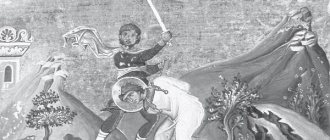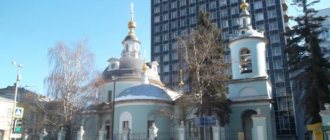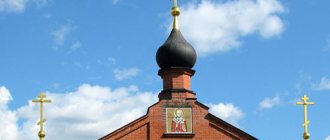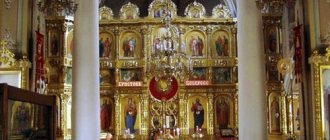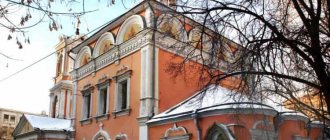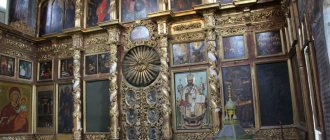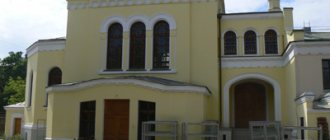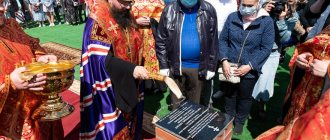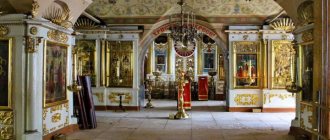Mir
Russia Moscow Church of St. Zosima and Savvaty Solovetsky in Golyanovo (Moscow) Map is loading...
{"format":"leaflet","minzoom":false,"maxzoom":false,"limit":50,"offset":0,"link":"all","sort":[""], "order":[],"headers":"show","mainlabel":"","intro":"","outro":"","searchlabel":"\u2026 \u0441\u043b\u0435\ u0434\u0443\u044e\u0449\u0438\u0435 \u0440\u0435\u0437\u0443\u043b\u044c\u0442\u0430\u0442\u044b","default":"","import-annotation":false,"width ":"auto","height":"350px","centre":{"text":"","title":"""link":"""lat":55.81833000000000311047188006341457366943359375,"lon": 37.81416999999999717374521424062550067901611328125,"icon":""},"title":"","label":"","icon":"","lines":[],"polygons":[],"circles":[ ],"rectangles":[],"copycoords":false,"static":false,"zoom":8,"defzoom":14,"layers":["OpenStreetMap"],"image layers":[] ,"overlays":[],"resizable":false,"fullscreen":true,"scrollwheelzoom":true,"cluster":false,"clustermaxzoom":9,"clusterzoomonclick":true,"clustermaxradius":80, "clusterspiderfy":true,"geojson":"","clicktarget":"","showtitle":true,"hidenamespace":false,"template":"","userparam":"","activeicon": "","pagelabel":false,"ajaxcoordproperty":"","ajaxquery":"","locations":[{"text":"\u003Cb\u003E\u003Ca href=\"/palomnik/%D0% A5%D1%80%D0%B0%D0%BC_%D0%BF%D1%80%D0%B5%D0%BF%D0%BE%D0%B4%D0%BE%D0%B1%D0%BD% D1%8B%D1%85_%D0%97%D0%BE%D1%81%D0%B8%D0%BC%D1%8B_%D0%B8_%D0%A1%D0%B0%D0%B2%D0% B2%D0%B0%D1%82%D0%B8%D1%8F_%D0%A1%D0%BE%D0%BB%D0%BE%D0%B2%D0%B5%D1%86%D0%BA% D0%B8%D1%85_%D0%B2_%D0%93%D0%BE%D0%BB%D1%8C%D1%8F%D0%BD%D0%BE%D0%B2%D0%BE_(%D0 %9C%D0%BE%D1%81%D0%BA%D0%B2%D0%B0)\» title=\»\u0425\u0440\u0430\u043c \u043f\u0440\u0435\u043f\u043e\u0434\ u043e\u0431\u043d\u044b\u0445 \u0417\u043e\u0441\u0438\u043c\u044b \u0438 \u0421\u0430\u0432\u0432\u0430\u0442\u0438\u044f \ u0421\u043e\u043b\u043e\u0432\ u0435\u0446\u043a\u0438\u0445 \u0432 \u0413\u043e\u043b\u044c\u044f\u043d\u043e\u0432\u043e (\u041c\u043e\u0441\u043a\u0432\u 0430)\»\u003E\u0425\ u0440\u0430\u043c \u043f\u0440\u0435\u043f\u043e\u0434\u043e\u0431\u043d\u044b\u0445 \u0417\u043e\u0441\u0438\u043c\u044b \u 0438\u0421\u0430\u0432\u0432\ u0430\u0442\u0438\u044f \u0421\u043e\u043b\u043e\u0432\u0435\u0446\u043a\u0438\u0445 \u0432 \u0413\u043e\u043b\u044c\u044f\u 043d\u043e\u0432\u043e (\u041c \u043e\u0441\u043a\u0432\u0430)\u003C/a\u003E\u003C/b\u003E\u003Chr /\u003E\u003Ca href=\"/palomnik/%D0%A1%D0%B2%D0%BE% D0%B9%D1%81%D1%82%D0%B2%D0%BE:%D0%90%D0%BD%D0%BD%D0%BE%D1%82%D0%B0%D1%86%D0 %B8%D1%8F\" title=\"\u0421\u0432\u043e\u0439\u0441\u0442\u0432\u043e:\u0410\u043d\u043d\u043e\u0442\u0430\u0446\u0438\u044f\"\ u003E\u0410\u043d\u043d\u043e\u0442\u0430\u0446\u0438\u044f\u003C/a\u003E: "'\u0425\u0440\u0430\u043c \u041f\u0440\u0435\u04 3f\u043e\u0434\u043e \u0431\u043d\u044b\u0445 \u0417\u043e\u0441\u0438\u043c\u044b \u0438 \u0421\u0430\u0432\u0432\u0430\u0442\u0438\u044f \u043 2\u0413\u043e\u043b\u044c\u044f \u043d\u043e\u0432\u0435"' \u2014 \u043f\u0440\u0430\u0432\u043e\u0441\u043b\u0430\u0432\u043d\u044b\u0439 \u0445\u0440\u04 30\u043c\u0412\u043e\u0441 > 044f\u041c\u043e\u0441\u043a \u043e\u0432\u0441\u043a\u043e\u0439 \u0435\u043f\u0430\u0440\u0445\u0438\u0438. \u0425\u0440\u0430\u043c \u0440\u0430\u0441\u043f\u043e\u043b\u043e\u0436\u0435\u043d \u0432 \u0440\u0430\u0439\u043e\u043d \u0435 \u0413\u043e\u043b\u044c \u044f\u043d\u043e\u0432\u043e, \u0412\u043e\u0441\u0442\u043e\u0447\u043d\u043e\u0433\u043e \u0430\u0434\u043c\u0438\u043d \u0438\u0441\u0442\u0440\ u0430\u0442\u0438\u0432\u043d\u043e\u0433\u043e \u043e\u043a\u0440\u0443\u0433\u0430 \u0433\u043e\u0440\u043e\u0434\u0430 \u 041c\u043e\u0441\u043a\u0432\ u044b.","title":"\u0425\u0440\u0430\u043c \u043f\u0440\u0435\u043f\u043e\u0434\u043e\u0431\u043d\u044b\u0445 \u0417\u043e\u0441\u 0438\u043c\ u044b \u0438 \u0421\u0430\u0432\u0432\u0430\u0442\u0438\u044f \u0421\u043e\u043b\u043e\u0432\u0435\u0446\u043a\u0438\u0445 \ u0432\u0413\u043e\u043b\u044c\ u044f\u043d\u043e\u0432\u043e (\u041c\u043e\u0441\u043a\u0432\u0430)”,”link”:””,”lat”:55.8183300000000031104718800634145736694335937 5,"lon":37.81416999999999717374521424062550067901611328125,"icon":"" }],"imageLayers":[]}
55.818341; 37.81407
Russia, Moscow, Baikalskaya street, 37A
Moscow
Russia
Telephone:
Temple of Saints Zosima and Savvaty in Golyanovo
- Orthodox Church of the Resurrection Deanery of the Moscow Diocese. The temple is located in the Golyanovo area, the Eastern administrative district of Moscow.
History[edit]
The first mention of the village, which received its name from the minnow fish, which was found in abundance in local reservoirs, dates back to the 60s of the 17th century, when Golyanovo was the patrimony of Tsar Alexy Mikhailovich Romanov. The ancient Khomutovskaya road passed through it, going from Moscow to the “grand-ducal boarders” on the Klyazma River. Its exact name was: “Pokrovskoe, Vasiltsov district, camp of the Radonezh tithe.” Close to this time, a wooden church was built in Golyanov in honor of the Monks Zosima and Savvaty of Solovetsky wonderworkers. Apparently, its developer was Tsar Alexei Mikhailovich himself. The temple received “bread ruba” (maintenance) from the village of Pokrovskoye. It is also testified that the temple was endowed with “a tithe of arable land and a tithe of mowing land”; these incomes supported the temple and its clergy. Tsar Alexei Mikhailovich also built a candle factory in Golyanov. Since the construction of the temple in honor of the Solovetsky saints Zosima and Savvaty, Golyanov can no longer be treated as a village, but only as a village.
In the 60s of the 17th century (1662), the parish consisted of 58 households, and this included not only the residents of Golyanov, but also the peasants of neighboring villages - Chernitsyno, Abramtsevo, Kobylino.
Golyanovo and the surrounding villages were already under the jurisdiction of the Main Palace Chancellery. But since it was not a profitable estate, by the beginning of the 19th century the village ended up in the hands of private owners. In 1805, Golyanovo was acquired by a certain Sergeev, and since 1811 it was listed under the court councilor Prince I.N. Trubetskoy. The latter’s estate also included the surrounding villages: Abramtsevo, Lukino, Sukovo and the former palace village - Nikolskoye.
After the Patriotic War of 1812 and the plunder by the French of the main estate of the Trubetskoy princes in Govorovo, Ivan Nikolaevich Trubetskoy and his wife, Natalya Sergeevna (nee Princess Meshcherskaya), moved to quiet Golyanovo. With the move of the Trubetskoy princes, life began to boil in Golyanov. A park was laid out around the estate in Golyanov and a huge reservoir was created. By 1816, Golyanovo became the center of the Trubetskoy estate and officially received the status of a village. At the same time, instead of a wooden church, Rev. Zosima and Savvaty, a brick church was erected, which was consecrated in 1842. The landowners Trubetskoy were not only the main investors, but also the builders of the temple. The church had two parts - the cold part of the temple, or the summer church (the quadrangle with a throne in honor of the Monks Zosima and Savvaty of Solovetsky), and the winter chapel - the refectory part of the temple, with a throne in honor of Sts. martyrs Adrian and Natalia. A stone chapel was erected on the site of the old wooden church. The church was built in the Empire style - late classicism. The refectory part of the temple so far had only one chapel in honor of the holy martyrs Adrian and Natalia; where the “Life-Giving Spring” altar is now located, a living spring flowed. By the end of the 19th century, the Trubetskoy estate was already listed as the name of the Balashikha Manufactory Partnership. In 1872, a huge plot measuring 2,653 dessiatines, which included the villages of Golyanovo, Nikolskoye and other surrounding villages, was sold to the merchant A.N. Pribilof. Near Golyanov there was Venedikt Vedeneev’s brick factory and a weaving and dyeing establishment. The former royal candle factory continued to operate here, only under the supervision of the Moscow Diocesan Department.
In the 30s of the 20th century, a pig-breeding state farm named after the 10th anniversary of the October Revolution was created in Golyanov. The Soviet transformations of this time also affected the church: the temple was closed, and the premises were given over to a pasta factory, with all the ensuing consequences. In 1960, Golyanovo became part of Moscow, and by the early 70s it fell into the zone of mass housing development. Until the last moment, the temple building remained in Golyanov the only valuable building of the first quarter of the 19th century.
On March 31, 1990, after 75 years of destruction and desecration, the Church of St. Zosima and Savvaty was returned to the Russian Orthodox Church. The building stood without a dome, with a destroyed altar apse, with a crater instead of a floor in the quadrangle, with a headless bell tower. From the storage and use of chemicals for experiments on rabbits and rats on the walls, not only was there no painting preserved, there was no plaster itself, the brick itself had to be cut one and a half meters from the floor, because it was all etched with chemicals, and there was no plaster, much less painting , they couldn’t stay on it. When the temple was adapted for a pasta factory, in order not to install a factory chimney, the bell tower of the temple was adapted to exhaust smoke, having first dismantled its dome. In addition, the slag from the furnaces was not removed for decades, but was dumped directly on the territory. And when the temple was given to the Church, no less than one hundred and twenty carloads of “cultural soil” had to be removed from the territory of the temple (and this is in Moscow!).
The temple presented an indescribable sight. It was possible to enter it only through the window, which is now in the altar of the chapel of the holy martyrs Adrian and Natalia; In the same place where the “Life-Giving Spring” throne is now, no altar in the temple has ever existed at any time. In its place was a recess from a gushing source, which was equipped with a kind of brick ceiling, and the entrance to the source was a hole: anyone who wanted to draw from the source could only do this by approaching it on their knees. (A baptistery was subsequently erected on the site of the source.) In place of the quadrangle, instead of a dome, there was a vault of heaven, and instead of a floor, there was a crater. From the very top, where the dome should have started, to the bottom of a funnel dug in the floor, an iron structure of incredible size descended, which could only be lifted with a powerful crane. The altar apse of the main altar was destroyed.
A cleanup day was scheduled for March 31, 1990 (the day the keys were accepted). The population was notified in advance about the cleanup. Over the course of two days and three nights, a temporary iconostasis was built. People's help did not dry up all week, but the results are obvious: despite the unspeakable, even horrific destruction, in one week the ruins of the temple were adapted for Divine services. On March 31, the keys were accepted, and on the evening of April 6, the first All-Night Vigil was served, on the feast of the Annunciation of the Most Holy Theotokos. On the very day of the holiday in the morning, with the blessing of His Holiness Patriarch Pimen, a small (priestly) consecration of the throne was performed in honor of the icon of the Mother of God “Life-Giving Source” and the first Divine Liturgy was celebrated.
Information for visitors
Every year the temple of St. Zosima and Savvaty in Golyanovo is visited by many pilgrims. The doors of the Orthodox shrine are open daily, but for more information it is better to visit the official website: hramgolyanovo.ru.
Schedule of services
The Golyanovskaya shrine is available to visitors every day from morning to evening. Here you can attend regular services or order services. Traditionally, two services are held from Monday to Friday:
- 8:00 – Divine Liturgy;
- 18:00 – evening service.
On weekends and holidays another liturgy is added at 10:00.
How to get there
The Church of the Venerable Solovetskys is located at the address: Moscow, st. Baikalskaya, 37a. You can get there as follows: get off at the Shchelkovskaya metro station, and then follow bus route No. 3 or 68 to the stop “Temple of Zosima and Savvatia”.
The Golyanovskaya Church is a must-see attraction during a pilgrimage to Moscow’s holy places. Despite the difficult fate and almost half a century of oblivion, today the temple happily welcomes believers from all over the country.
If you find an error, please select a piece of text and press Ctrl+Enter.
Current state[edit]
Description[edit]
Interior decoration
The current temple in the classicist style with a three-tier bell tower was built in 1842. After 1917, the temple was closed and beheaded. Re-consecrated in 1990. In recent years, the temple has been transformed before our eyes. The walls of the temple rose from the ruins, the majestic bell tower again rushed to the sky and with its chimes invites people to the temple to glorify God.
A beautiful flower garden has been planted on the territory of the temple, in the center of which there is a fountain.
In addition, behind the temple there is a three-story Sunday school building, which also houses a museum of paintings and sculptures, a library and a conference room.
On August 21, 2008, on the day of the patronal feast, a monument to the Holy Right-Believing Tsarevich Demetrius of Uglich was unveiled on the territory of the temple.
Activities of the parish[edit]
There is a baptistery at the Temple of Zosima and Savvaty Solovetsky.
There is a Sunday school for children and adults, and there is also a Spiritual and Educational Center.
A charity service has been created to help the poor.
There is a library and a church museum.
There is a Parents' Committee - a public association of residents of the Golyanovo municipal district, whose active members are teachers of nearby schools and parishioners of the temple.
External and internal decoration
Despite the loss of the original decor, the Church of the Venerable Solovetskys is officially recognized as a historical monument of the 19th century. The temple was built in the Empire style, has a three-tiered belfry, two altars and one chapel, consecrated in honor of the Mother of God icon “The Life-Receiving Source”. The building is lined with light yellow plaster, which harmoniously combines with the snow-white architectural elements. The temple painting repeats the style of the original frescoes.
The territory of the Golyanovskaya shrine is decorated with an elegant fountain and picturesque flower beds. Here you can admire many fabulous sculptures, as well as the monument to St. Dmitry Uglitsky, opened on August 21, 2008. Behind the church there is a three-story rectangular building that houses a Sunday school, a library, an art museum, and a conference room.
High altar
Chapel of the Holy Martyrs Adrian and Natalia
Chapel in honor of the image of the Mother of God “Life-Giving Source”
Shrines[edit]
The image of St. Nicholas with the life, the icon of the Tver letters
- The image of St. Nicholas with his life, the icon of the Tver letters.
- Icon “Entry of the Most Holy Theotokos into the Temple” - with the twelve feasts. On the reverse side of the icon there is a seal with the year and the author of the painting - 1691, Sylvester.
- Two arks - for 50 and 100 relics. Made by Andrey Matveenko, using the marquetry method (mosaic on wood)
- Calvary cross. The cross is made according to the model of the cross that is located in the Old Believer chapel of the Moscow Preobrazhenskoye cemetery. The source was made by Byzantine craftsmen and dates back to the 14th century.
From the history of the church
Initially, the parish of the temple included about 56 households, and these were residents of Golyanov and neighboring villages.
At the beginning of the 19th century, the village belonged to private owners. First, it was acquired by a certain Sergeev, later by Prince I. Trubetskoy, who also owns nearby villages.
In 1812, Trubetskoy's estates suffered greatly. Together with his wife, Ivan Nikolaevich moves to Golyanovo, where the family begins to settle down.
Life quickly began to bubble up on the estate. The village is being transformed, the abandoned and seemingly no longer needed temple in the name of Zosima and Savvaty takes on a new look. In place of the wooden church, a brick shrine quickly appears.
The temple had 2 parts - warm and cold. The construction was carried out in the style of late classicism - Empire style. A stone chapel appears next to the temple.
In 1872, the Trubetskoys sold a huge plot of land, which included Golyanovo and many surrounding villages, to the merchant Pribilov. A brick factory and a weaving and dyeing factory will soon be built near Golyanov. The candle factory, opened under Tsar Romanov, also continues to operate.
Construction
Around the same time, the wooden church of Zosima and Savvaty, the miracle workers of Solovetsky, was erected. Presumably its construction began on the orders of Tsar Alexei Mikhailovich himself. After its completion, the temple immediately began to receive maintenance from the neighboring village of Pokrovskoye, and tithes of mowing land and the same amount of arable land came into its possession. It was with these incomes that the temple and its clergy were maintained. In addition, a candle factory was soon built in Golyanovo.
After the Church of Zosima and Savvaty was built here, this settlement could no longer be treated as a village. From that moment on, Golyanovo became a full-fledged village. It is known that this church was popular among parishioners, as it was visited not only by local residents, but also by peasants from nearby villages: Abramtsevo, Chernitsyno and Kobylino.
Church of Zosima and Savvaty of the Trinity-Sergius Monastery
It is known that the shrine in Golyanovo is not the only one dedicated to these Solovetsky miracle workers. There is another temple located on the territory of the Trinity-Sergius Monastery. This church was built in 1635-1637. It was built simultaneously with the stone chambers, which later housed the monastery hospital. According to the ancient inventory, the temple originally had five bells. Its slender and regular proportions, as well as the extraordinary decoration of the facade with a rather generous use of irrigated green tiles, made it one of the most interesting architectural monuments of the early 17th century.
The Church of Zosima and Savvaty of the Trinity-Sergius Monastery was built with the active assistance of Alexander Bulatnikov, who was appointed Trinity cellarer from among the monks of the Solovetsky monastery. Now it serves as the house temple of the viceroy's chambers. The rest of the building complex houses the cathedral chambers, as well as the chambers of the monastery’s governor himself.

